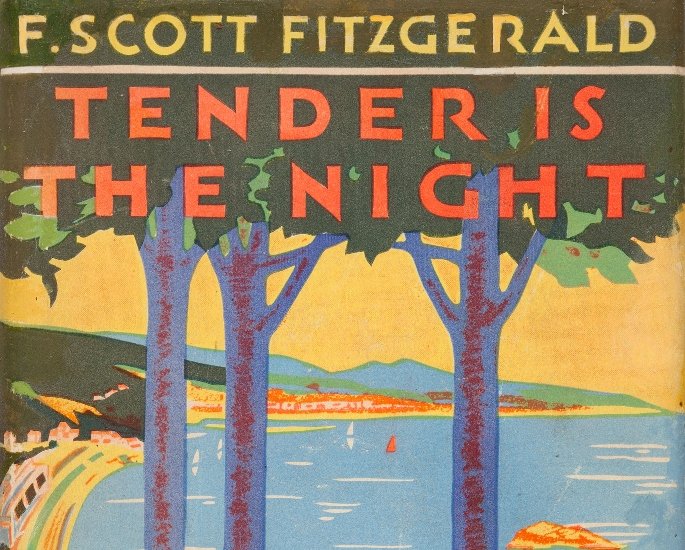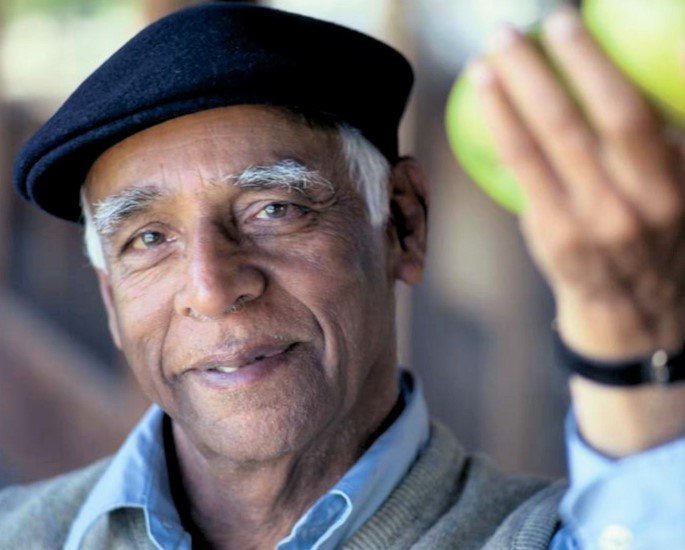John Huddles talks ‘Asha of the Air’ & South Asian Culture
John Huddles is a screenwriter, filmmaker and author who has released a magical novel of spirituality and South Asian mysticism titled Asha of the Air (2022).
Centred on a young woman, the novel is set in an immersive world of history, science, philosophy and tradition.
It explores the story of Asha, a powerful figure who is trying to conceive a new identity balancing power, culture and feminity along the way.
The abusive nature of Asha’s marriage draws upon historical issues of gender imbalances whilst shining a light on problems still relevant in the modern-day.
Taking place in a fantastical era, the princess is on a path of self-realisation.
However, the gender struggles mixed with South Asian contexts make for a striking story of hope and resilience.
The enriching imagery, deep foundations of culture and thought-provoking symbolism are all in tune with the plot and South Asia itself.
Although, this isn’t the first time John has touched upon this area. In his 2020 novel, Boon on the Moon, he includes the Indian diaspora in the form of a child from Jaipur.
Evidently, John’s skills as a writer are eye-catching and unique.
Although, this comes as no surprise considering he was one of Brown University’s first-ever undergraduate Writing Fellows.
As a creative, there is no denying how talented John is. Whilst his writing dares to tackle unorthodox yet engaging storylines, his expertise in film are also similar.
This is highlighted by his 2013 sci-fi movie After the Dark or The Philosophers for those outside the US.
The fantasy drew upon the filmmaker’s early literary influences and starred English actor James D’Arcy and also Bonnie Wright from Harry Potter.
The movie was nominated for ‘Best Motion Picture’ at The Sitges Film Festival – the world’s top fantasy film festival.
This just touches upon the vast amount of knowledge, artistry and vision John Huddles has.
His unapologetic approach to challenging himself and the mediums he is a part of have only elevated his majestic originality.
Asha of the Air is just another example of this ability.
So, we spoke exclusively with John about the novel, the inspiration behind it and how important South Asia is to his craft.
How did your love for writing begin?


As a young reader, I was crazy about the so-called Heinlein juveniles.
If you don’t know them, they’re sci-fi legend Robert Heinlein’s spacefaring novels for boys.
When I aged out of them as a teenager, I found my way to F. Scott Fitzgerald and then Lawrence Durrell, who stayed my guys for a long time.
Actually, Fitzgerald’s Tender Is The Night (1934) and Durrell’s Alexandria Quartet (1962) I never go too many years without re-reading.
The way they use language equally poetically and cinematically I’m not sure anyone else has ever matched.
By the time I was in college I came back from literary fiction to sci-fi and fantasy: Lord Of The Rings (1954) and Dune (1965) in particular.
I’d say Herbert’s Dune series, the first and last books in the cycle, are still my favourite reads of all time.
Not just for the way they fire the mind, but as examples of how stories on the page can still surpass storytelling in any other medium, even film.
What influenced you to create a novel like ‘Asha of the Air’?
Reading the ‘Upanishads’. Specifically the translation and commentaries by Eknath Easwaran, one of the great 20th-century teachers of Hindu sacred texts.
He was born in Kerala, and he was a professor of English literature at the University of Nagpur.
He came to the University of California at Berkeley on a Fulbright Scholarship in the late 50s.
“His 1987 translation of the ‘Upanishads’ into English, along with his sparkling explication, for me was mind-blowing.”
Especially the ‘Isha Upanishad’, aka the ‘Ishopanishad’. Easwaran quotes Mahatma Gandhi, who said:
‘If all the ‘Upanishads’ and all the other scriptures happened all of a sudden to be reduced to ashes…
…if only the first verse in the ‘Ishopanishad’ were left in the memory of the Hindus, Hinduism would live forever.’
I wanted to learn more about the kind of verse that combined such longevity with such efficiency.
So I read a fair bit of it…and I’m afraid to say my instinct to steal from the best took over.
Why was it important to have such a South Asian focus for this novel?


The famous invocation of the ‘Isha Upanishad’ goes:
All this is full. All that is full.
From fullness, fullness comes.
When fullness is taken from fullness,
Fullness still remains.
Om shanti shanti shanti.
From a western point of view, this is a revolutionary economic theory; or maybe better said it’s a revolutionary theory of spiritual economics. (I’m paraphrasing Easwaran.)
Anyway, Asha of the Air explores the ‘Isha Upanishad’ in theme as well as the plot. Transformed echoes of the invocation show up all along Asha’s path.
I suppose I was sceptical that this kind of content would’ve worked, or even made sense, outside of a South Asian-inspired setting.
I mean, the idea of limitless resources exists exactly nowhere in the philosophies or economic models of the west.
It would’ve been an uphill climb narratively to set the story in medieval England or France, for example.
Also, the South Asian-inspired setting offered a lot more opportunities for poetry, psychology, history, and metaphysics.
The culture of India just has more facets.
What was the creative process behind imagining someone like Asha?
Asha’s problems are specific but universal.
So really it was just a matter of exercising the mental muscle to picture a character in her actual life, moment to moment.
“Not in big, sweeping descriptions, but in single units of emotion, need, hope, and existence, which add up.”
If you give yourself enough time and don’t rush it, you can, I think, align your imagination fairly thoroughly with someone else’s characteristics.
To use your word, and by extension their actions and consequences.
What was the importance of the spiritual and philosophical elements?


Well, Asha is on a spiritual and philosophical journey. Not one she wanted to take by the way.
She liked things the way they were, pre-journey, but the way things were didn’t last. So she really has no choice except to look for a new way forward.
And you can’t find a new way forward by material means or by an irrational or impulsive course of action – that just leads you in circles.
You need guidance, which is a spiritual and/or philosophical input, wherever it comes from, even if it comes from inside of yourself.
So the elements you mention are really the story’s building blocks, not its adornments. If you subtract them, the story comes apart.
Why did you also reference abusive marriages and femininity?
I think we’re living at a time when these topics aren’t only relevant, they’re urgent.
For me, it feels necessary to explore these topics in whatever way.
And through whichever medium might make a dent in the catastrophic failure of our testosterone-driven planetary civilisation.
So we’re talking about South Asia and the west now, and everywhere in between.
“After 10,000 years of behavioural modernity, or whatever the actual number is, it’s clearly not working.”
The biology of masculinity has created a whole set of false and wildly hazardous values in nearly every society on earth.
We need a new paradigm before it’s too late, and there’s only one option: the feminine. I don’t mean the feminisation of men as individuals.
I mean the feminine impulse as a prioritised and valorised way of seeing the world – and interacting with it.
Asha herself doesn’t think in these terms, it would be way too grandiose for her, too pretentious.
But in her own extremely modest way, she’s a change agent.
What type of research went into ‘Asha of the Air’?


Other than studying the translations and commentaries on the ‘Upanishads’ that I’ve mentioned, I read a fair amount about the chivalric legends of medieval Europe.
A few key pieces of which make their way into Asha’s story. Apart from that, research was mainly linguistic.
Not that I’m a linguist, just an amateur admirer of the discipline.
I was also lucky enough to have several native Hindi speakers advise me, including a teacher of Hindi.
That probably counts more as generosity on their part than research on mine, but so it goes.
Were there any characters or themes that really resonated with you?
It would be hard for me to say that the title character doesn’t resonate with me.
What I like most about Asha is that she’s aware of and open about her flaws, but she doesn’t let them ruin her in the end.
There’s the old cliché that you should write about what you know, which is probably the most idiotic pointer in the history of advice-giving.
“Of course, what you should write about is what you want to know.”
That’s what makes writing a discovery, and if it’s a discovery for the writer, it has the potential of being revelatory for the reader.
Discovering Asha’s path was my motivation. She was my eyes and ears on the way to something better.
‘Asha of the Air’ is in four parts rather than distinct chapters, why do this?


My day job is writing and occasionally directing movies, so I’m probably guilty of thinking by default in tripartite structure, plus a coda for good measure.
But creating big breaks in a written narrative does seem to be weirdly satisfying.
There’s something very dramatic and exciting in the time-jumps. It’s hard for me to put my finger on why it works.
Something about it I think adds authority to the story when you realise things have happened off-screen, and now we’re back in the flow and have to catch up.
Was it more challenging writing about the culture of South Asia?
As a white male who grew up on the east coast of the United States, I would never try to write about South Asian culture from the point of view of someone who’d actually lived it.
But the philosophies of South Asia I don’t think the Vedic sages were aiming to keep to themselves.
“So to the extent that I’m just a student of that wisdom tradition, I felt comfortable exploring it in fiction.”
Also, the fantasy context, meaning the fantasy genre, I think gives the writer more latitude to roam beyond the borders of his or her personal background.
And in the end, it’s not the real South Asia or the real India I’ve written about. It’s an invented culture that’s Hindi-inflected and South Asia-inspired.
Do you think you would revisit a South Asian inspired storyline?


Way back in 2003, I made a trip to Mumbai to meet with a certain Bollywood star and discuss a film we were looking to join forces on.
Ultimately the timing didn’t work out, schedules in Bollywood being fairly complicated compared to shoots in the US.
But the upside of the trip for me was being exposed, even if only for a few weeks, to the spectacular culture and people of India.
So yes, South Asia will continue to inspire me, and I’d love to revisit it both in fact and in fiction.
At the very least I’d like to include characters from India or the Indian diaspora in stories, in print and on film.
Not least because this is the way the world is actually composed today.
My last book, published in 2020, is a kids’ sci-fi adventure tale set on the moon, Boon On The Moon.
Boon himself is a nine-year-old troublemaker who moves to the lunar colony of Cosmopolis with his parents.
The first person he meets there is a nine-year-old girl from Jaipur called Honeybun Bajpai, who moved to Cosmopolis the year before with her parents.
Her mother is a brain surgeon and her father is a space allergist.
No surprise, Honeybun is the smartest girl in Boon’s class at school, a literal genius.
She also turns out to be the girl that Boon marries in the future. The Indian diaspora even reaches into space in this story.
What future novels/projects can you tell us about?
As for new projects, I’m developing an adaptation of ‘Asha Of The Air’ for a limited streaming series.
My “slate”, as they say, includes other films that take place in the US and UK.
“Also, I’m working on a new novel, an alternate history of the United States, set in the late 1800s.”
The narrator happens to be a young American woman who was born in Delhi (she’s the daughter of American scientists working there) and who grew up entirely in India.
At the age of 20, she takes a ship to America to visit for the very first time a country that she’s a citizen of but which she knows nothing about firsthand.
So it’s another angle on the intersection of South Asia and the west, though again in a fantasy genre.
It is clear to see how intuitive, expressive and dedicated John is to his craft.
Whilst many may question why John has taken such a strong South Asian influence in his work, others are praising him.
He is setting the example for more authors to embrace the ideals and values that South Asia has and presenting them to wider audiences.
Asha of the Air does exactly that. It entices you and places you right next to Asha as you experience her pain, struggles and triumphs.
Highly emotive, poetic and thought-provoking read, this novel is a truly captivating experience for bookworms everywhere.
Or for those looking to get back into reading, there’s no better place to start than with this book.
Check out more of John Huddles and Asha of the Air here.